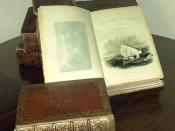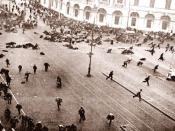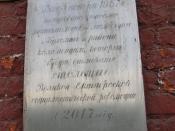Russian Formalism, a movement of literary criticism and interpretation, emerged in Russia during the second decade of the twentieth century and remained active until about 1930. Members of what can be loosely referred to as the Formalist school emphasized first and foremost the autonomous nature of literature and consequently the proper study of literature as neither a reflection of the life of its author nor as by product of the historical or cultural background in which it was created. In this respect, proponents of a formalist approach to literature attempted not only to isolate and define the "formal" properties of poetic language (in both poetry and prose) but also to study the way in which certain aesthetically motivated determined the literariness or artfulness of an object.
As a historical-spatial movement, formalism can be said to have moved gradually from Russia toward the West. By nature, formalism was opposed to Marxism, and so, the movement was condemned by the leaders of the new Soviet Union.
It went West, primarily through the emigration of Roman Jakobson to the Czechoslovak republic, in which he found refuge after having forecast the coming of sinister developments within the Russian Revolution. In 1926 Trubetskoy and Jakobson founded the Prague Linguistic Circle. Among the more seminal Tcheck formalists was Mukarovsky, who oriented formalism toward semiotics. After the invasion of Czechoslovakia by the Nazis, Jakobson moved into a new American exile where he taught at first at the Free School for Advanced Studies where he met the anthropologist Claude Levi-Strauss. It is chiefly through their close friendship that Russian formalism evolved after the Second World War into French structuralism.
At first, in the years preceding the Russian revolution, it was the creation of two circles, one in Moscow, the other in Saint-Petersburg. The movement was called Opoyaz...


